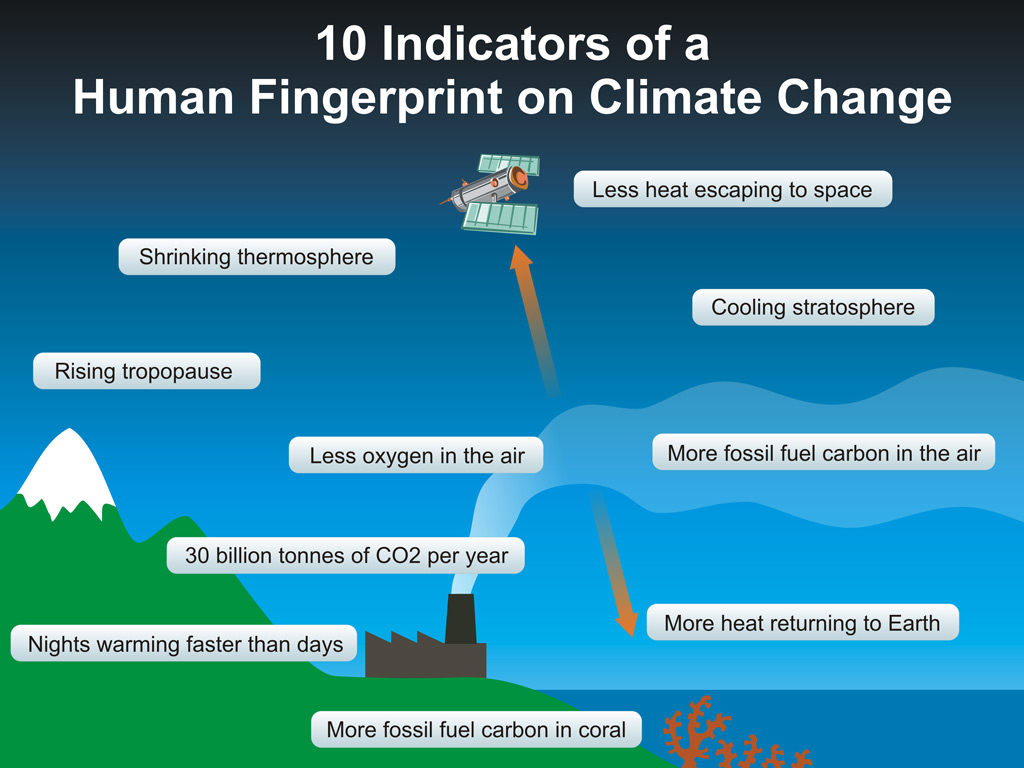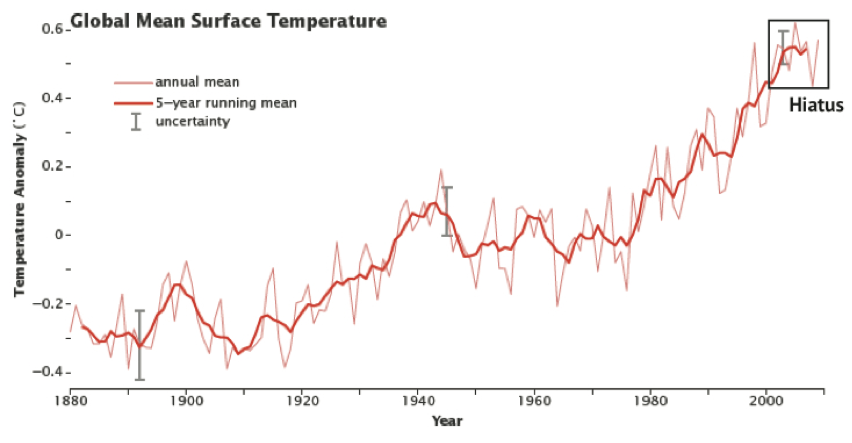 Arguments
Arguments
 Software
Software
 Resources
Comments
Resources
Comments
 The Consensus Project
The Consensus Project
 Translations
Translations
 About
Support
About
Support


Latest Posts
- Skeptical Science New Research for Week #14 2025
- Two-part webinar about the scientific consensus on human-caused global warming
- Sabin 33 #22 - How does waste from wind turbines compare to waste from fossil fuel use?
- Clean energy generates major economic benefits, especially in red states
- 2025 SkS Weekly Climate Change & Global Warming News Roundup #13
- Skeptical Science New Research for Week #13 2025
- Climate skeptics have new favorite graph; it shows the opposite of what they claim
- Sabin 33 #21 - How does production of wind turbine components compare with burning fossil fuels?
- China will need 10,000GW of wind and solar by 2060
- 2025 SkS Weekly Climate Change & Global Warming News Roundup #12
- Skeptical Science New Research for Week #12 2025
- Climate Fresk - a neat way to make the complexity of climate change less puzzling
- Sabin 33 #20 - Is offshore wind development harmful to whales and other marine life?
- Do Americans really want urban sprawl?
- 2025 SkS Weekly Climate Change & Global Warming News Roundup #11
- Fact brief - Is waste heat from industrial activity the reason the planet is warming?
- Skeptical Science New Research for Week #11 2025
- Visualizing daily global temperatures
- Sabin 33 #19 - Are wind turbines a major threat to wildlife?
- The National Hurricane Center set an all-time record for forecast accuracy in 2024
- 2025 SkS Weekly Climate Change & Global Warming News Roundup #10
- Fact brief - Is Greenland losing land ice?
- The Cranky Uncle game can now be played in 16 languages!
- Skeptical Science New Research for Week #10 2025
- Climate Adam: Protecting our Planet from President Trump
- Sabin 33 #18 - Can shadow flicker from wind turbines trigger seizures in people with epilepsy?
- Cuts to U.S. weather and climate research could put public safety at risk
- 2025 SkS Weekly Climate Change & Global Warming News Roundup #09
- Fact brief - Are high CO2 levels harmless because they also occurred in the past?
- Skeptical Science New Research for Week #9 2025
Archived Rebuttal
This is the archived Intermediate rebuttal to the climate myth "It's a natural cycle". Click here to view the latest rebuttal.
What the science says...
|
Natural cycles cannot be the cause of observed global warming because they don't fit the observed fingerprints of global warming. Only increasing greenhouse gas concentrations due to human activities fit the observed fingerprints and explain |
Global warming refers to the long-term warming of global temperature since the 1850s. The cause of global warming has been investigated by many scientists, who have summarized their finding in multiple assessment reports by the Intergovernmental Panel on Climate Change (IPCC). The only plausible mechanism of global warming is a planetary energy imbalance, with our climate system building up heat. This and the observed fingerprints left on global warming confirm the dominant role of human activities.
Fossil fuel burning is causing recent global warming
Scientists have identified two factors that drive global climate change: internal variability and external forcings. Internal variability refers to the internal processes moving heat around within the climate system. External forcings cause an energy imbalance - with the planet either building up or losing heat - and can be both natural and human caused. The only plausible mechanism accounting for the long-term temperature increase of global warming is through a buildup of heat in the climate system (Li et al., 2007).
Among the various external forcings that can cause the climate system’s energy imbalance, scientists have concluded the main cause of recent global warming is the increase of atmospheric CO2 due to fossil fuel burning.
In order to understand how scientists came to the above conclusion, it is important to understand the various drivers of climate changes.
Internal variability moves heat around the climate system
Climate change is like the motion of water in a kitchen sink with an inflow from the faucet and an outflow through the drain. The motion consists of both the water sloshing around and the rising and falling of water level. The random sloshing around is what scientists call "internal variability," while the rising and falling of water level is what scientists call "forced variability". Internal variability (e.g., ocean cycles such as El Niño South Oscillation, Pacific Decadal Oscillation, and Atlantic Multidecadal Oscillation) moves heat around to give rise to regional climate change on timescales ranging from annual to millennial timescales. Like the water sloshing around, internal variability doesn't build up or dissipate the total amount of heat in the climate system. In contrast, external forcings (e.g., 11-year solar cycle and changes in the Earth’s orbit) change the climate by causing a buildup or loss of heat, similar to the change in water level being determined by the difference between the inflow and outflow.
The single cause fallacy committed by the natural cycle myth
One climate myth argues that recent global warming is caused by natural cycles rather than human activity. The so-called “natural cycles” in the myth may include climate variation due to internal variability or external forcings. Natural external forcings, such as the 11-year solar cycle and changes in the Earth’s orbit, are part of nature and not influenced by human activities. Other external forcings like greenhouse gases and aerosol concentrations in the atmosphere are significantly influenced by human activities, and thus are excluded from natural cycles.
The argument that global warming is due to natural cycle commits single cause fallacy, by assuming there is only one driver of climate change (e.g., natural factors) when there may be others (e.g., human activity). In this case, the myth argues that the same factors, namely internal variability and natural external forcings, that drove past natural cycles must also be the same factors causing current global warming. But the fact is that humans have emitted large amounts of CO2 into atmosphere by burning fossil fuel since the industrial revolution, and it is the main cause of recent global warming.
One version of this myth is that the natural cycles may cause cyclic climate change with timescales ranging up to millennial timescales, and therefore recent global warming is just the rising phase of such a cycle. However, this argument is ruled out by the observed fingerprints on global warming (seen in Figure 1) since no natural cycles fit all these fingerprints. For example, natural cycles cannot explain why the satellites measures less heat escaping to space at the precise wavelengths which CO2 absorbs (Philipona 2004, Wang 2009).
The observed fingerprints on global warming and the fact that only external forcings can cause a buildup in heat in the climate system work together to not only rule out natural cycles, but also confirm that the anthropogenic CO2 increase in the atmosphere is the main cause of modern global warming.

Figure 1: Schematic of the fingerprints on global warming (Skeptical Science).
Internal variability does NOT build up heat
Internal variability changes the global mean surface temperature by moving heat around inside the climate system without changing the total amount of heat for any sustained period in time. Some internal variabilities, such as the Pacific Decadal Oscillation, can transfer heat from the ocean’s upper layers to the deep ocean. As a result, more heat is moved to the deep ocean and the global mean surface temperature decreases (Douville et al., 2015). Burying all this heat in the deep ocean led to a stagnation of global warming from 2000 to 2015, known as the so-called global warming hiatus (shown in Figure 2).
However, the heat hadn't left the climate system. When ocean cycles shifted to a different phase, the buried heat in the deep ocean was released to the ocean upper layers, causing an increase in the global mean surface temperature. We saw this rebound in warming with 2014, 2015, and 2016 being the hottest years on record. Natural cycles from internal variability only results in cyclical fluctuations and are not the driver of long-term global warming.

Figure 2: This temporary plateau in temperatures has been referred to as a hiatus. Adapted from NASA Earth Observatory.
Since internal variability does not change the climate system’s energy balance and long-term warming requires a buildup in heat, the cause of the global warming can only be changes in external forcings. But which exact external forcing?
Fingerprints confirm fossil fuel burning is the main cause
The main external forcing driving global warming has to explain the observed “fingerprints”. One of these fingerprints is the troposphere (the lowest part of the atmosphere) warming with the stratosphere (the upper levels of the atmosphere) cooling. Greenhouse gases build up heat by trapping the outgoing radiation on Earth without changing the incoming energy. As most of the greenhouse gases occupy the lower troposphere, they act like a blanket covering the surface. As a result, warming caused by increasing greenhouse gases starts from the lower atmosphere, namely troposphere (Liou 2002). This fingerprint also rules out the sun as a possible cause of warming as increased solar energy would heat the whole atmosphere.
The amount of received solar radiation also varies with changes in the Earth's orbit. These are referred as Milankovitch cycles. They occur on very long-time scales (10,000+ years) and cannot explain the warming over the past 100 years. In addition, direct measurements show an increased greenhouse effect. The only explanation that fits the observed evidence is the increase in greenhouse gases.
The increase in greenhouse gases in the atmosphere is caused by human activities rather than natural processes. For example, CO2 emission from volcanoes is small compared to anthropogenic emissions. Although the ocean emits large amount of CO2, it actually absorbs more CO2 than it emits, including anthropogenic CO2 (Falkowski and Wilson 1992). So, the net effect of CO2 natural cycles are quite small. In addition, CO2 from fossil fuels has its own fingerprints. Fossil fuels contain less of the carbon-13 isotope, which explains why the atmospheric ratio of carbon-12 to carbon-13 has been increasing as more anthropogenic carbon dioxide gets added to the atmosphere. Additionally, atmospheric oxygen (O2) is decreasing at the same rate that CO2 is increasing, because oxygen is consumed when fossil fuels burn.
Therefore, the only cause of global warming that both makes sense from a physics point of view and fits the observed global warming “fingerprints” is increase in CO2 from fossil fuel burning.
The climate myth viewing global warming as a natural cycle distorts the fact with a single cause fallacy. Before the 1850s when human influence on climate was almost negligible, natural cycles were the dominant drivers of the global temperature changes. But currently, with large amounts of fossil fuel burned since the industrial revolution, the global mean surface temperature is showing an obvious increasing trend apart from what can be explained by natural cycles. The natural cycles can still explain these fluctuations superimposed over the trend but fails to explain the continuously increasing trend itself. The main cause of recent global warming is the increasing anthropogenic CO2 in atmosphere.
Updated on 2015-07-17 by MichaelK.
THE ESCALATOR

(free to republish)
























































